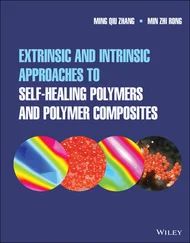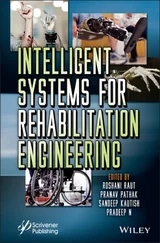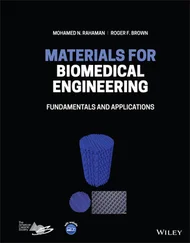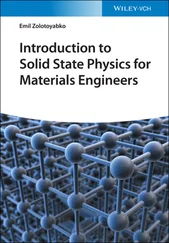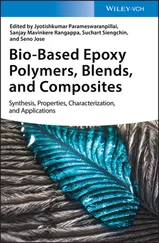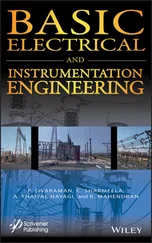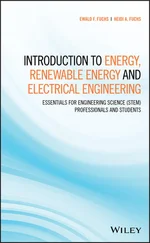Polymer Composites for Electrical Engineering
Здесь есть возможность читать онлайн «Polymer Composites for Electrical Engineering» — ознакомительный отрывок электронной книги совершенно бесплатно, а после прочтения отрывка купить полную версию. В некоторых случаях можно слушать аудио, скачать через торрент в формате fb2 и присутствует краткое содержание. Жанр: unrecognised, на английском языке. Описание произведения, (предисловие) а так же отзывы посетителей доступны на портале библиотеки ЛибКат.
- Название:Polymer Composites for Electrical Engineering
- Автор:
- Жанр:
- Год:неизвестен
- ISBN:нет данных
- Рейтинг книги:5 / 5. Голосов: 1
-
Избранное:Добавить в избранное
- Отзывы:
-
Ваша оценка:
- 100
- 1
- 2
- 3
- 4
- 5
Polymer Composites for Electrical Engineering: краткое содержание, описание и аннотация
Предлагаем к чтению аннотацию, описание, краткое содержание или предисловие (зависит от того, что написал сам автор книги «Polymer Composites for Electrical Engineering»). Если вы не нашли необходимую информацию о книге — напишите в комментариях, мы постараемся отыскать её.
Polymer Composites for Electrical Engineering
Polymer Composites for Electrical Engineering
Polymer Composites for Electrical Engineering — читать онлайн ознакомительный отрывок
Ниже представлен текст книги, разбитый по страницам. Система сохранения места последней прочитанной страницы, позволяет с удобством читать онлайн бесплатно книгу «Polymer Composites for Electrical Engineering», без необходимости каждый раз заново искать на чём Вы остановились. Поставьте закладку, и сможете в любой момент перейти на страницу, на которой закончили чтение.
Интервал:
Закладка:
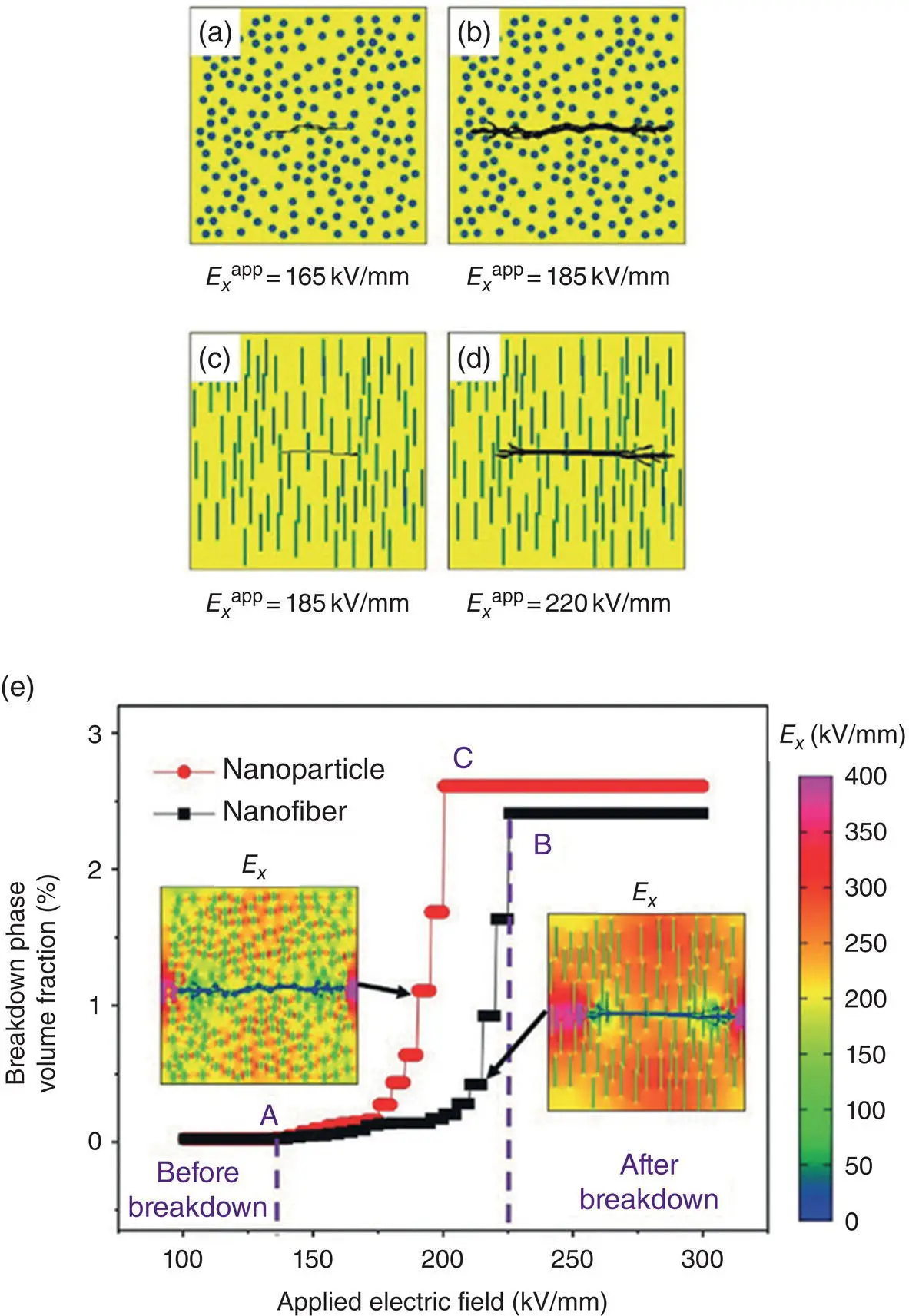
Figure 1.2 The breakdown phase propagation simulation based on phase field model in composites filled with 10 vol% of (a, b) BT nanoparticles and (c, d) BT nanofibers, (e) the evolution of breakdown phase under applied electric field. Insets in (e) show the electric field distribution in corresponding polymer composites.
Source: Shen et al. [36]. Reproduced with permission of John Wiley & Sons.
Compared with 0D and 1D nanofillers, 2D nanofillers can impede the charge carrier transport and thus suppress the conduction loss because of the special lamellar structure [37–40]. Moreover, the 2D nanofillers can substantially improve the electrical breakdown strength of the polymer composites. Zhu et al. compared the electrical and capacitive energy storage performance of PVDF/TiO 2composites filled with 5 wt% of 0D, 1D, and 2D TiO 2nanofillers [41]. It is found that the 2D TiO 2nanofillers can not only increase the dielectric constant but also suppress the dielectric loss, which is desirable for electrical energy storage application ( Figure 1.3). Because the 2D TiO 2nanofillers can effectively suppress the charge carrier transport, the leakage current of the composite with 2D TiO 2nanofillers is only a half of that of the composite with 0D TiO 2nanofillers. The composite with 2D TiO 2nanofillers also exhibits higher electrical breakdown strength (i.e. 566 MV/m) in comparison to that of the composite with 0D (i.e. 295 MV/m) and 1D (i.e. 382 MV/m) TiO 2nanofillers, representing an increase of 92 and 48%, respectively. As the result of increased breakdown strength and dielectric constant, as well as the suppressed conduction loss, the composite with 2D TiO 2nanofillers shows the highest discharged energy density of 13 J/cm 3at 570 MV/m, which is about 236 and 382% that of the composite with 0D (i.e. 5.5 J/cm 3at 400 MV/m) and 1D (i.e. 3.4 J/cm 3at 300 MV/m) TiO 2nanofillers, respectively. Moreover, the charge/discharge efficiency of the composite with 2D TiO 2nanofillers is also the highest among the three kinds of composites because of the suppressed conduction loss.
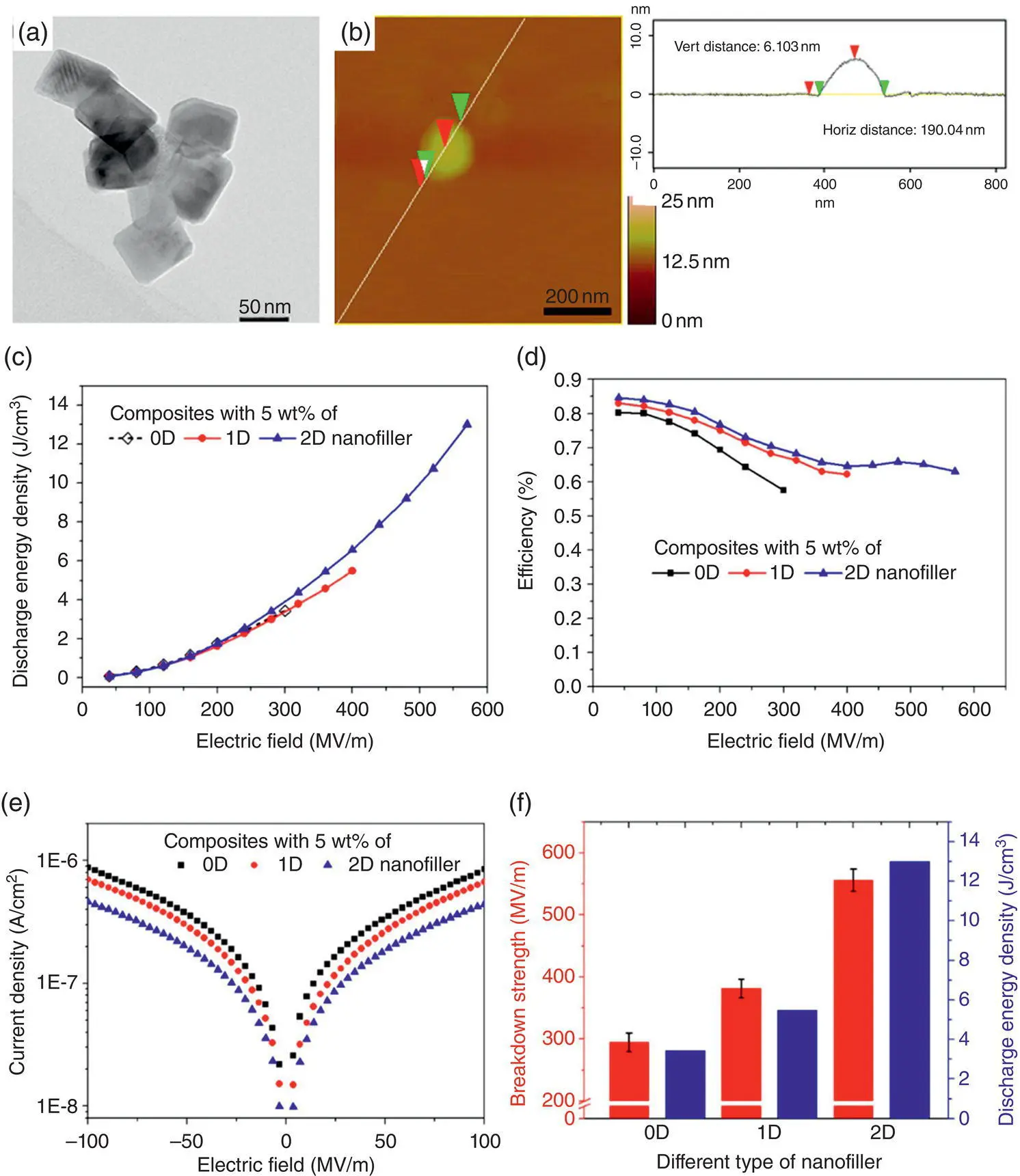
Figure 1.3 (a) TEM image of 2D TiO 2nanofillers, (b) atomic force microscopy (AFM) image of 2D TiO 2nanofillers and corresponding surface morphology of the selected line, (c) discharged energy density, (d) charge/discharge efficiency, (e) leakage current density, and (f) electrical breakdown strength of the PVDF/TiO 2composites with 5 wt% of 0D, 1D, and 2D TiO 2nanofillers.
Source: Zhu et al. [41]. Reproduced with permission of American Chemical Society.
Apart from the 2D nanofillers with high dielectric constant, such as TiO 2nanoplates, 2D nanofillers with high insulating performance, such as hexagonal boron nitride nanosheets (BNNSs), aluminum oxide (Al 2O 3) nanoplates, and montmorillonite (MMT) nanosheets, have been widely used in polymer composites for electrical energy storage because of their unique ability to improve the breakdown strength of the polymer composites [42–44]. For example, owing to the wide bandgap (~6 eV) and excellent breakdown strength (~800 MV/m) of BNNS, the P(VDF‐TrFE‐CFE)/BNNS composite can reach up to a high electrical breakdown strength of 610 MV/m at the BNNS filler content of 12 wt% ( Figure 1.4), which represents an enhancement of 70% as compared with that of the pristine P(VDF‐TrFE‐CFE) polymer of 362 MV/m [23]. Moreover, the P(VDF‐TrFE‐CFE)/BNNS composite shows an order of magnitude improvement in the high‐field electrical resistivity over the pristine polymer. These results indicate that the highly insulated 2D nanofillers can function as an efficient barrier layer to impede the electrical conduction and breakdown. Because of the increased breakdown strength and electrical resistivity, the P(VDF‐TrFE‐CFE)/BNNS composite shows a maximum discharged energy density of 20.3 J/cm 3, which is 121% over that of the P(VDF‐TrFE‐CFE) polymer, i.e. 9.3 J/cm 3. In addition to the enhanced discharged energy density, the charge/discharge efficiency of P(VDF‐TrFE‐CFE)/BNNS composite is also significantly enhanced, i.e. 83% at 300 MV/m and 80% at 600 MV/m.
1.4 Orientation of Nanofillers
Considering the superiority of high‐aspect‐ratio nanofillers over 0D nanofillers, constructing anisotropic dielectric polymer composites with aligned nanofillers can fully utilize the high‐aspect‐ratio nanofillers to tailor the dielectric properties and electrical energy storage performance of the polymer composites. For example, it is shown that when the 1D nanofillers are aligned in parallel to the electric field direction, the enhancement of the dielectric constant is more obvious. While for increasing the electrical breakdown strength, nanofillers aligned perpendicular to the electric field direction are more effective [3]. These phenomena are closely related to the morphology of the nanofillers and the electric field distribution in the polymer composites. Considering that 2D nanofillers are usually used to increase the electrical breakdown strength of the polymer composites, it is obvious that the perpendicularly aligned 2D nanofillers are more effective to impede the charge transport and electrical breakdown propagation.
Using the high‐throughput phase‐field simulation, Shen et al. demonstrated the effect of 1D and 2D nanofiller alignment on the electrical breakdown strength of the polymer composites filled with 10 vol% nanofillers [36]. The breakdown phase growth is substantially different in the polymer composites with different nanofiller morphologies and their alignment ( Figure 1.5). The polymer composite with vertically aligned nanofibers shows the lowest breakdown strength owing to the condensed electric field distribution that promotes the growth of the breakdown phase. Among the five simulated structures, only the polymer composite with parallel nanosheets exhibits the higher electrical breakdown strength than that of the pure polymer because of the dispersed electric field. These results indicate that the volume fraction of the nanofillers should not be higher than 10 vol% where high electrical breakdown strength is desired.
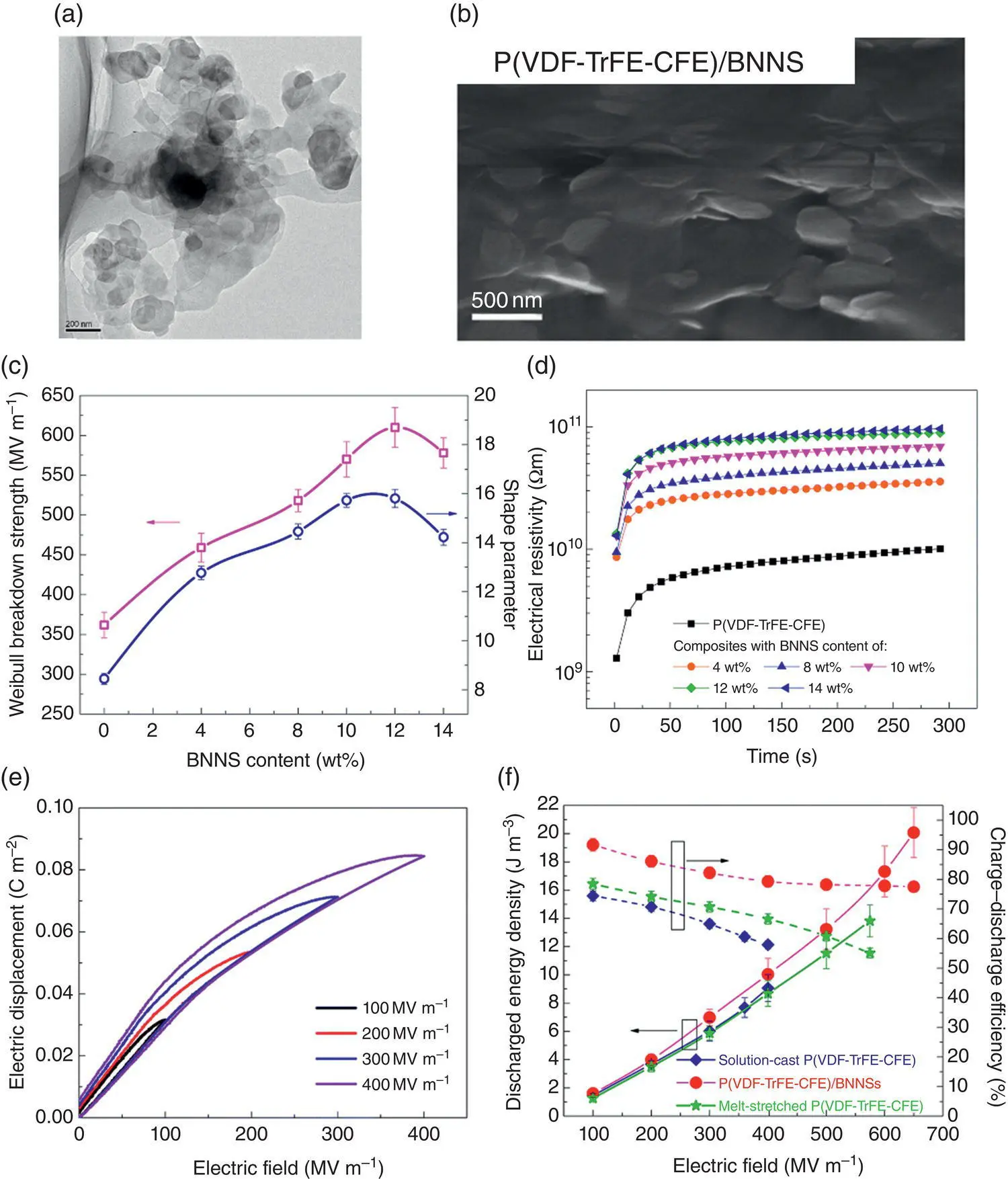
Figure 1.4 (a) TEM image of BNNSs, (b) cross‐section scanning electron microscopy (SEM) image of the P(VDF‐TrFE‐CFE)/BNNS composite, (c) Weibull breakdown strength and shape parameter as functions of BNNS fraction, (d) electrical resistivity of P(VDF‐TrFE‐CFE)/BNNS composite with different contents of BNNSs under 10 MV/m, (e) D ‐ E loops of P(VDF‐TrFE‐CFE)/BNNS composite with 12 wt% of BNNSs, and (f) discharged energy density and charge/discharge efficiency of pristine P(VDF‐TrFE‐CFE) and P(VDF‐TrFE‐CFE)/BNNS composite with 12 wt% of BNNSs.
Source: Li et al. [23]. Reproduced with permission of The Royal Society of Chemistry.
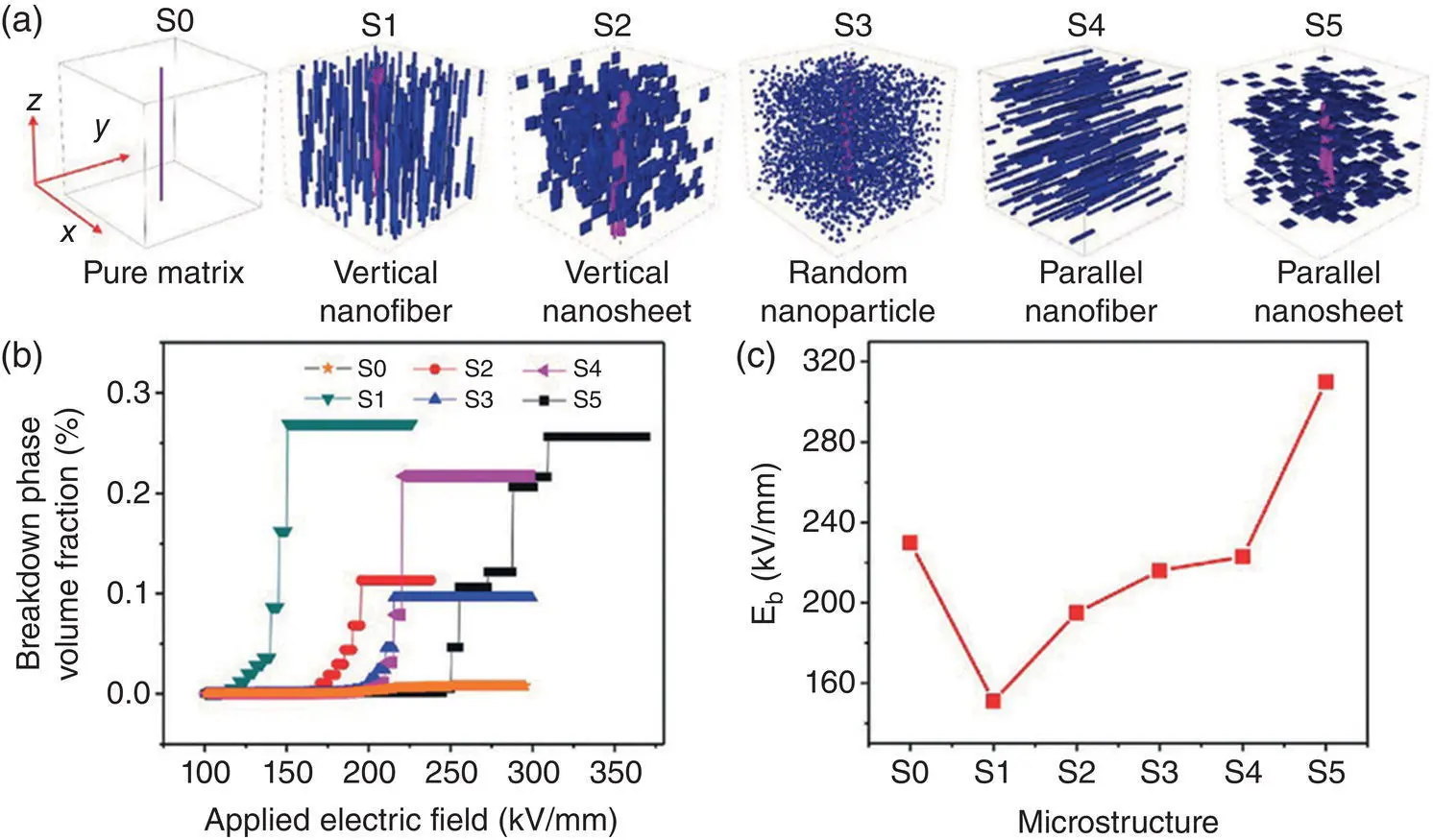
Figure 1.5 3D simulations of microstructure effects on breakdown, (a) breakdown phase morphology in the nanocomposites with different microstructures; (b) evolutions of the breakdown phase volume fraction under applied electric fields; (c) extracted breakdown strengths for corresponding nanocomposites.
Читать дальшеИнтервал:
Закладка:
Похожие книги на «Polymer Composites for Electrical Engineering»
Представляем Вашему вниманию похожие книги на «Polymer Composites for Electrical Engineering» списком для выбора. Мы отобрали схожую по названию и смыслу литературу в надежде предоставить читателям больше вариантов отыскать новые, интересные, ещё непрочитанные произведения.
Обсуждение, отзывы о книге «Polymer Composites for Electrical Engineering» и просто собственные мнения читателей. Оставьте ваши комментарии, напишите, что Вы думаете о произведении, его смысле или главных героях. Укажите что конкретно понравилось, а что нет, и почему Вы так считаете.



